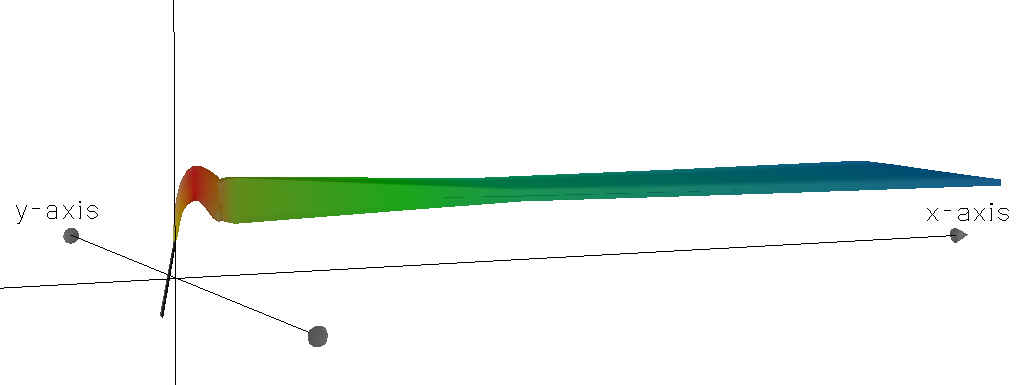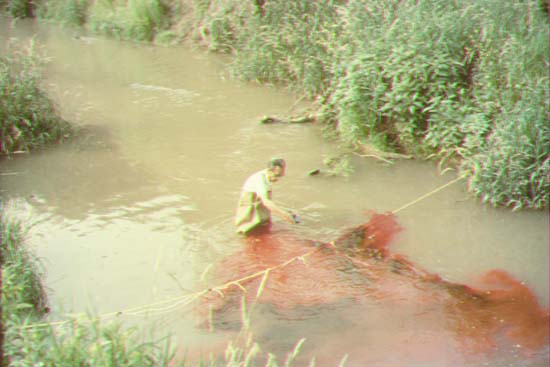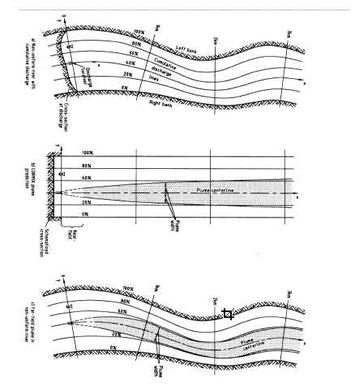After the effluent flow has interacted with the water surface, bottom,
pycnocline, or terminal layer and has
thus completed its near-field mixing phase, far-field mixing begins.
The far-field region consists of one or two mixing processes and is simulated within CORMIX with the following two conditions:
- If it contains sufficient buoyancy there will be a density current region followed by a passive diffusion region.
- If it is non-buoyant or weakly buoyant there is no density current region, only a passive diffusion region.
The density current region is characterized by dynamic horizontal spreading and gradual vertical thinning of the
mixed effluent flow while being advected by the ambient current.
Buoyant upstream intrusions may occur with stagnation points. Vertical boundary interaction may occur, and the flow may
contact one or both lateral boundaries (shorelines). Heated discharges loose buoyancy due to heat transfer
while buoyancy diminishes in sediment laden flows due to particle settling.
In the passive diffusion region, the dilution is controlled by the turbulent mixing action of the
flowing ambient water body.
Again, boundary interaction may occur, and the flow may become both laterally and
vertically fully mixed within this region.







